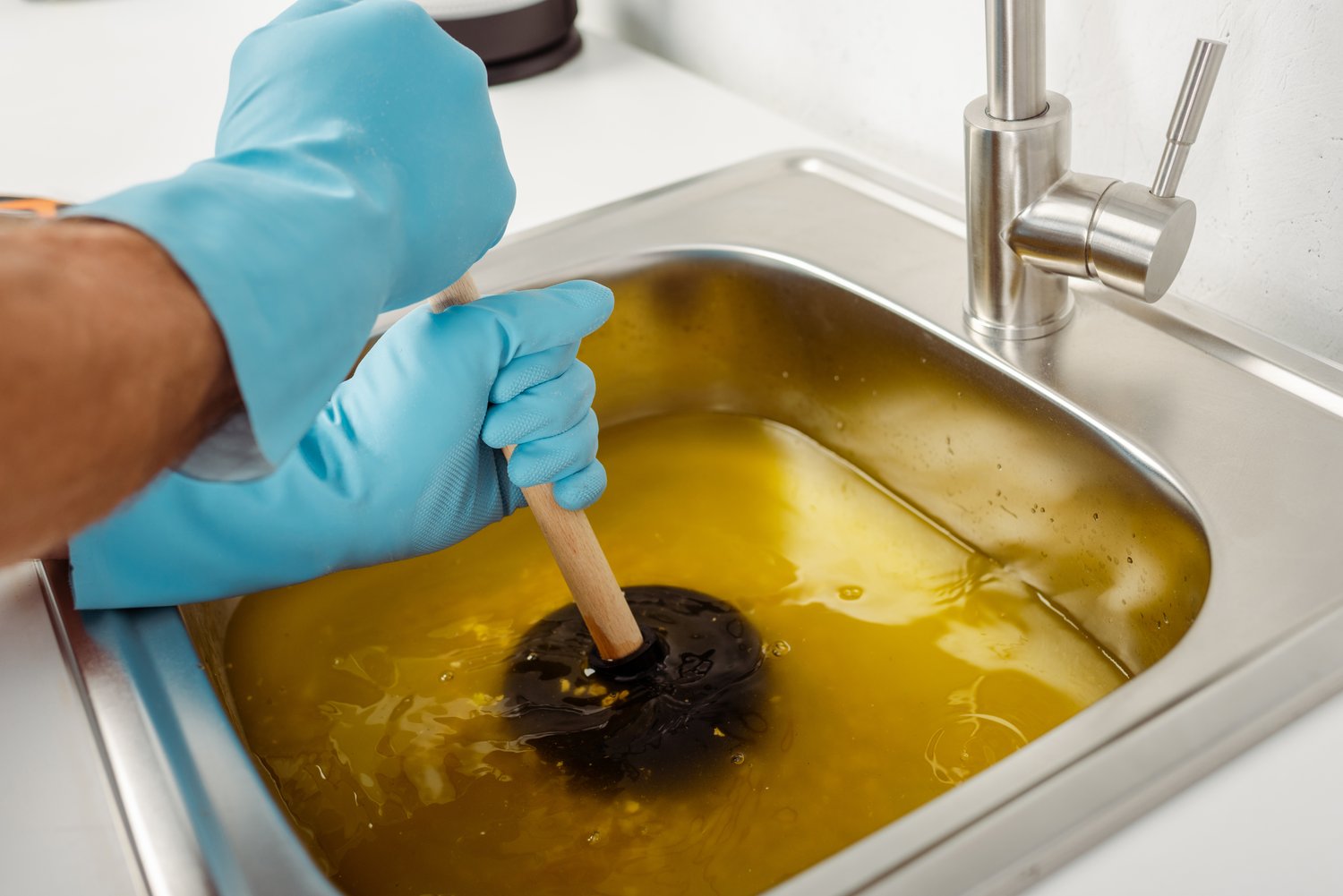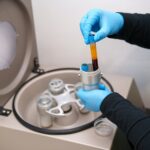For many homeowners, encountering a clogged drain is a familiar frustration that disrupts daily routines and energy-saving plans. Yet, relying on harmful chemicals isn’t the only option—and it’s certainly not the most eco-friendly one. This article unveils effective, natural techniques to unclog drains, safeguarding both your pipes and the environment.
- Understand why chemical drain cleaners might do more harm than good and explore greener alternatives.
- Learn how baking soda and vinegar, common household items, can dissolve clogs effectively.
- Master the physical art of using a plunger to clear even the most stubborn blockages.
- Discover how a simple tool like a drain snake can tackle deeply embedded blockages.
These practical, eco-friendly solutions not only solve clogs but also promote a healthier, more sustainable home. Dive into these methods and see how simple changes can make a significant difference in your daily life.
The Wonders of Plungers: How to Unclog Any Drain Without Chemicals
When faced with a stubborn drain clog, a plunger might be your best friend. This simple yet powerful tool can help you tackle blockages effectively without the need for chemical drain cleaners. Plungers are designed to create a strong suction effect, which helps dislodge debris and restore proper drainage.
To use a plunger correctly, ensure that there is enough water in the sink or tub to submerge the plunger cup fully. Position the plunger over the drain, making sure it creates a seal. Use firm, controlled movements to push and pull the plunger, maintaining the seal to maximize suction. After a few pumps, check to see if the water begins to drain. You might need to repeat this process several times, but with persistence, you’ll likely clear the blockage.
Remember to clean the plunger thoroughly after each use. By mastering the art of plunging, you not only avoid harmful chemicals but also promote a healthier plumbing environment. Embrace these eco-friendly methods in your home for safe and efficient drain maintenance.
Manual Methods: The Art of Drain Snaking
When blockages lie deep within the pipes, turning to a drain snake is a practical and effective solution. This manual method allows you to reach and dislodge clogs that are beyond the reach of plungers and other surface-level tools. Using a drain snake requires patience but can be highly rewarding in clearing stubborn drains.
Begin by gently feeding the snake into the drain until you encounter resistance. This indicates the presence of a clog. Use the handle to rotate the snake, effectively breaking up the blockage. The twisting motion of the snake helps to either hook or dislodge the obstruction, allowing for easier removal.
Once you feel the clog has been cleared, slowly withdraw the snake, bringing any debris with it. Be cautious during removal to avoid splashing or spreading the mess. Thoroughly rinse and clean the snake after use. Mastering these manual solutions empowers you to manage and maintain your home’s plumbing system without reliance on chemical-laden products. This approach ensures a more sustainable and environmentally-friendly home environment.
Exploring Eco-Friendly Solutions: How to Unclog Any Drain Without Chemicals
Clogged drains are a common household issue, often prompting the use of harsh chemical drain cleaners. While these chemicals may provide a quick fix, they come with significant environmental and health risks. Many homeowners are now seeking eco-friendly alternatives that are both effective and sustainable.
Chemical drain cleaners can corrode pipes over time, leading to costly repairs and potential health hazards from toxic fumes. In contrast, natural methods like baking soda and vinegar, plungers, and drain snakes are not only safe for your plumbing but also kinder to the environment. By choosing chemical-free solutions, you can effectively manage drain blockages and contribute to a healthier home and planet.
Moreover, eco-friendly solutions are typically more budget-friendly as they rely on household items easily found in your kitchen or tool shed. This shift towards natural methods supports a greener lifestyle and aligns with a growing awareness of reducing chemical usage in our daily lives.
Using Baking Soda and Vinegar: A Natural Cleaning Duo
One of the most popular natural methods for unclogging drains involves baking soda and vinegar. This powerful duo acts as an effective yet gentle cleaning agent, perfect for maintaining healthy pipes. Here’s how it works:
First, pour a pot of boiling water down the drain to loosen any immediate debris. Follow this by pouring half a cup of baking soda directly into the drain. Let the baking soda sit for a few minutes.
Next, mix a cup of vinegar with a cup of hot water and pour the mixture over the baking soda. You’ll notice a fizzing reaction as the two components interact. This fizzing helps break down grime and unblock the drain naturally.
After about 15 minutes, flush the drain with another pot of boiling water to clear away any remaining debris. Regularly using this eco-friendly method not only prevents future clogs but also keeps pipes clean without the need for unpleasant chemicals.
This approach, which leverages household staples, promotes sustainable living and demonstrates an effective way to care for your home while being mindful of the environment.
Boiling Water and Its Role in Eco-friendly Drain Unclogging
Boiling water is one of the simplest and most accessible methods to unclog drains naturally. Often overlooked, this technique can be surprisingly effective and should be the first step attempted when facing minor blockages.
The process is straightforward. Boil a pot of water, then pour it slowly down the affected drain in stages. It’s important to proceed with caution to avoid splashing, especially when dealing with ceramic sinks or PVC pipes, as extreme temperatures can sometimes cause damage.
For optimum results, repeat this procedure two to three times. The high temperature of the water helps to dissolve soap scum, grease, and any soft substances causing the blockage. This method is particularly beneficial for kitchen drains, where food particles and oil can accumulate regularly.
Additionally, using boiling water in combination with baking soda and vinegar can enhance the effectiveness of your eco-friendly unclogging efforts. Pour baking soda into the drain first, followed by vinegar, and after allowing it to fizz, finish with boiling water.
Besides being chemical-free and environmentally friendly, boiling water offers an economical and straightforward solution to maintain clear drain pipes. Embracing such methods contributes to a safer and healthier home without reliance on harsh chemicals.
Consider sharing your experiences with using boiling water for unclogging drains. Have you discovered any unique tricks that complement this method? Feel free to engage in the comments below.
Frequently Asked Questions on Eco-Friendly Drain Unclogging
What are the risks of using chemical drain cleaners?
Risks include:
- Corrosion of pipes
- Release of toxic fumes
- Environmental damage
How does baking soda and vinegar unclog drains?
The combination creates a fizzy reaction that breaks down clogs naturally.
Can a plunger effectively clear all types of clogs?
Plungers work best for minor blockages but may not clear very stubborn or deep clogs.
Is using a drain snake difficult?
With some practice, using a drain snake can be an effective and straightforward method.
How often should I use boiling water for drain maintenance?
Pour boiling water down drains weekly to prevent build-up and maintain clear pipes.
Are these methods safe for all types of pipes?
Yes, these eco-friendly methods are safe for most modern plumbing systems.





